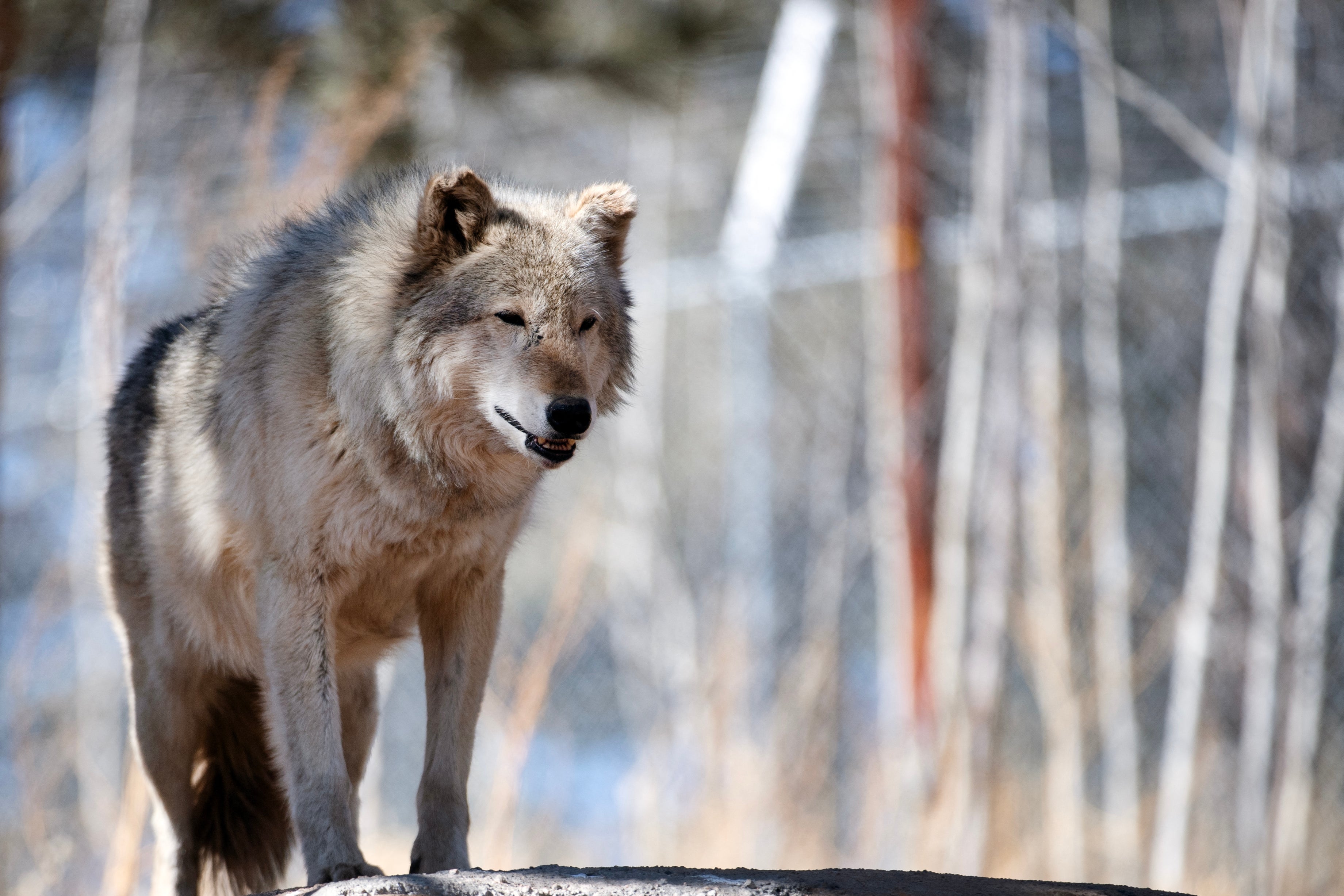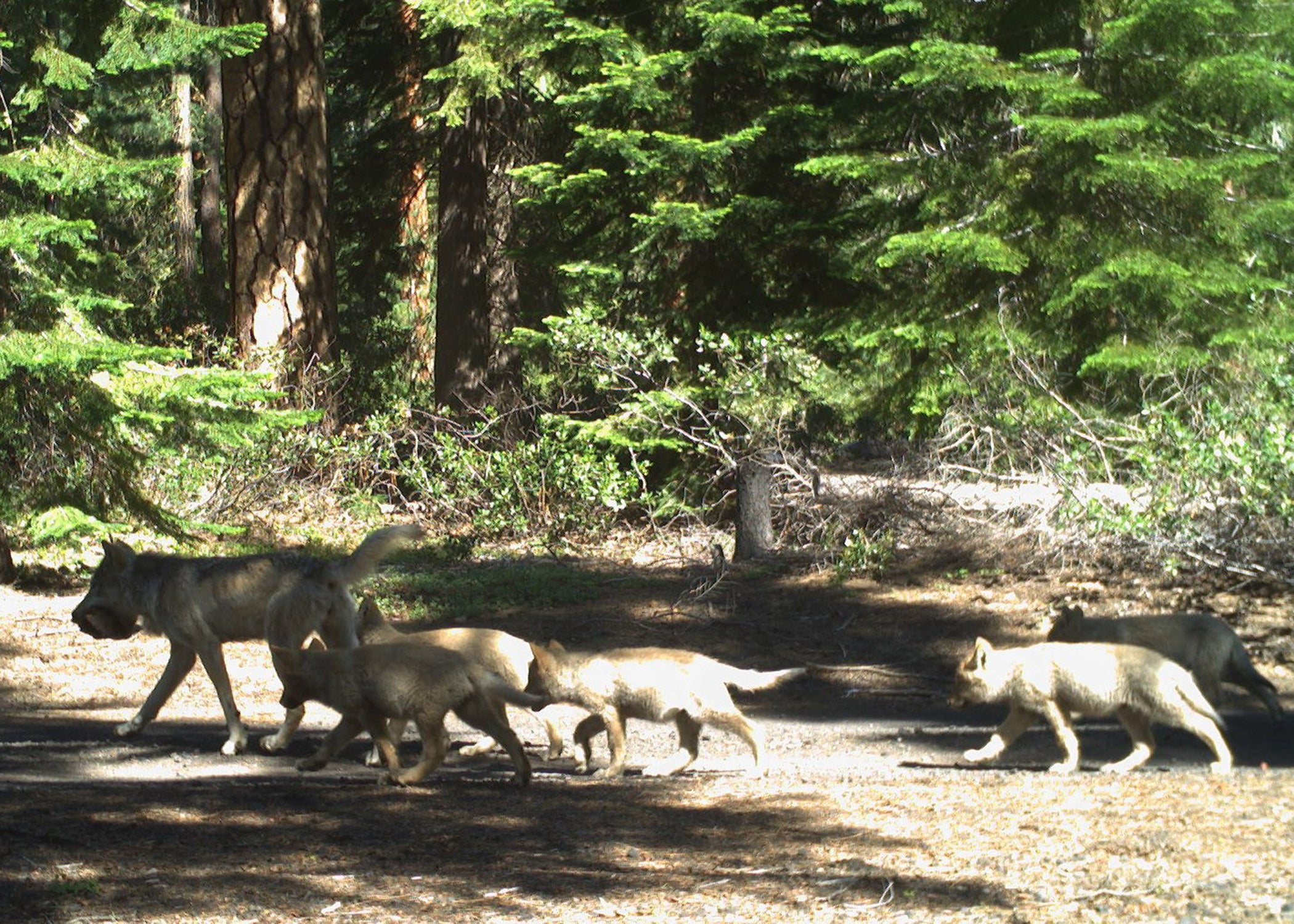Amid a rise in wolf attacks, America’s cattle farmers are taking an unorthodox approach to protecting their herds — with the help of some notorious rock legends.
Since gray wolves were reintroduced to the U.S. in 1995 following near-elimination, their populations have rebounded across their historical range in the Intermountain West and along the West Coast.
While the species’ return has led to multiple beneficial ecological changes, it has also recently resulted in the deaths of dozens of cattle and other livestock across multiple states.
Along with new strategies in collecting predator DNA to limit attacks, details of which the Department of Agriculture published this week, for the past three years, federal predator specialists have been “hazing” the gray wolves, using drones with speakers attached to blast AC/DC hits, including “Thunderstruck” and “Blue on Black.”
And that’s not all — a clip of an intense argument between Adam Driver and Scarlett Johansson’s characters in the 2019 movie “Marriage Story” also served to startle the wolves away from livestock.

The operations are quick and methodical. The drones have heat-seeking cameras that can show operators where the wolves are at night. A loudspeaker attached to the drone then plays a clip of human sound, and the wolves disperse nearly instantaneously.
After deploying the speaker-outfitted drones to the Klamath Basin area in southwestern Oregon, wolf attacks fell from around one every other night to less than one a month.
“We were able to effectively haze wolves away from cattle — and in one case — even stop an attack in progress,” said Dr. Dustin Ranglack, Predator Project Leader and Utah Field Station Leader for USDA’s National Wildlife Research Center, told Jefferson Public Radio last December.
“Hopefully they’re gonna be successful,” Jim Rickert, the 77-year-old owner of California’s Prather Ranch, told The Wall Street Journal on Friday, “but I’m kinda betting on the wolves, truth be known.”
It was a vast improvement on previous strategies for preventing wolf attacks — which involved Ranglack and his colleagues at Wildlife Services — chasing the predators on foot, he explained to The Wildlife Society this past February. Hardly an easy task when a gray wolf can reach speeds of up to 37 mph.
But while this strategy has had success, the attacks keep coming.
So far this year, dozens of cattle have been killed in western states.
California saw 27 calves killed in March and April alone, costing the state millions to reimburse agricultural losses and help to pay for fencing and other nonlethal deterrents, according to The Sacramento Bee. Earlier this week, Washington State wildlife officials killed an adult male wolf from a pack blamed for two cattle deaths in Ferry County, The Spokesman-Review said. In Colorado, state officials said they’re working to kill at least one wolf in Pitkin County after determining wolves killed one calf near Aspen last month, according to CPR News.

And the hunter appears likely to become the hunted once again.
Earlier this year, the House Appropriations Committee approved a bill that would remove the gray wolf from the list of endangered and threatened wildlife, and ensure that the decision could not be challenged. The move comes following similar legislation from Republicans that leaves it up to the states to determine whether the wolves can be hunted.
Although proponents have argued that the species has recovered over the last couple of decades, conservation groups say the gray wolves’ future remains precarious even without stripping their protections.
Melissa Smith, executive director of the Great Lakes Wildlife Alliance, said when federal protection was lifted in early 2021, Wisconsin state-licensed hunters killed 218 wolves in less than three days, surpassing a quota of 200, according to Wisconsin Public Radio.
“Certainly we’ve seen what wolf delisting does and did do in 2021 to wolves,” she said. “I have serious doubts in the accountability, transparency and democracy of the agency, especially when what’s going on federally, that U.S. Fish and Wildlife Service will not be able to monitor the situation of a freshly delisted species.”







